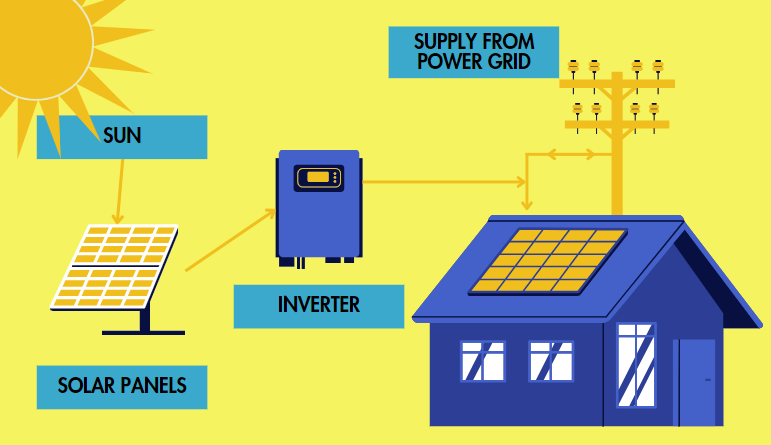How does it work?
Have you ever wondered how sunlight transforms into the energy that powers our homes and gadgets? Join us on a journey through the fascinating world of solar energy, where the power of the sun becomes a sustainable force driving the future of clean energy.
1. The Sun's Energy: A Cosmic Power Source
At the heart of solar energy lies our nearest star, the sun. Every second, the sun releases an enormous amount of energy in the form of light and heat. This energy travels across the vastness of space, reaching Earth and becoming the driving force behind solar power.
2. Absorption by Solar Panels: Harnessing Sunlight's Bounty
Enter solar panels, the unsung heroes of the solar energy story. These panels are typically made of semiconductor materials, often silicon. When sunlight strikes the surface of these panels, it excites electrons within the material, creating a flow of electricity – a phenomenon known as the photovoltaic effect.
3. Conversion of Light to Electricity: Photovoltaic Magic
As sunlight interacts with the solar cells, it triggers the release of electrons. These energized electrons are then harnessed and channeled as an electric current. This is the crucial process that converts sunlight into usable electricity – a clean and renewable energy source.
4. Inverters: Shaping the Power for Homes
The electricity generated by solar panels is in direct current (DC) form, but most homes use alternating current (AC) power. Enter inverters, devices that transform the DC electricity into the AC power that seamlessly integrates with your home's electrical system.
5. Powering Your Home: Solar Electricity in Action
Once converted, solar electricity is ready to power your home. It flows through the electrical panel, providing energy to your lights, appliances, and devices. Excess electricity can be fed back into the grid, earning you credits or reducing your overall energy costs.
6. Net Metering: Balancing the Energy Equation
Net metering is a game-changer for solar energy users. When your solar panels produce more electricity than your home consumes, the excess is fed back into the grid. In return, you receive credits on your electricity bill, creating a harmonious balance between solar production and energy consumption.
7. Solar Batteries: Storing Sunshine for Rainy Days
To address intermittent sunlight and ensure a continuous power supply, some solar systems include batteries. These batteries store excess energy during sunny days, allowing you to draw on that stored power during cloudy periods or at night.

